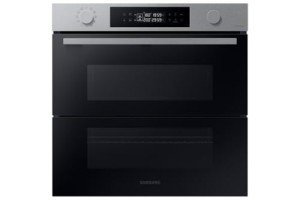5 Qualities That People Are Looking For In Every In Built Oven
The Comprehensive Guide to In-Built Ovens
In-built ovens, likewise called built-in ovens, are an important function in contemporary cooking areas, integrating performance and style in one style. With developments in technology and a growing emphasis on cooking experiences, built-in ovens have become significantly popular for both amateur cooks and expert chefs. This article offers an extensive summary of in-built ovens, their advantages, types, installation, upkeep, and responses to often asked questions.
What is an In-Built Oven?
A built-in oven is a kitchen device that is created to be integrated into kitchen cabinetry or walls, using a smooth appearance. Unlike best integrated oven freestanding ovens, built-in ovens are suited designated areas and are typically paired with other appliances, such as built-in microwaves or warming drawers, for a cohesive kitchen style.
Advantages of In-Built Ovens
Inbuilt ovens use numerous advantages over conventional ovens. A few of the key benefits consist of:
- Space Efficiency: Built-in ovens save important floor space and can help develop an organized kitchen layout, specifically in smaller areas.
- Visual Appeal: Their sleek design enhances the overall appearance of a kitchen, contributing to a contemporary and streamlined look.
- Ergonomics: These ovens are typically installed at eye level, making it simpler to examine on food and minimize the risk of flexing down.
- Modification: In-built ovens can be chosen based upon specific kitchen designs and personalization preferences, enabling house owners to produce their ideal cooking environment.
- Advanced Features: Many built-in ovens come geared up with modern functions like wise control systems, self-cleaning alternatives, and numerous cooking modes, improving effectiveness and cooking results.
Types of In-Built Ovens
Inbuilt ovens are readily available in various types, each dealing with different cooking styles and requirements. The primary types include:
- Single Ovens: A traditional design with one cooking compartment.
- Double Ovens: Featuring two cavities, permitting simultaneous cooking at different temperatures.
- Wall Ovens: Installed into the wall at eye level for easy access and minimized flexing.
- Steam Ovens: Use steam to prepare food, preserving moisture and nutrients.
- Convection Ovens: Incorporate fans for even heat circulation, reducing cooking times.
- Microwave Ovens: A mix of microwave and traditional oven performances, perfect for versatile cooking requirements.
- Mix Ovens: Combine different cooking approaches such as microwave, convection, and conventional baking.
Setup of In-Built Ovens
The installation procedure for inbuilt ovens differs based on the type and style. Here are some basic actions included:
- Preparation: Prior to installation, ensure the area is determined correctly and matches the oven's measurements.
- Electrical and Plumbing: If your oven requires a gas line or specific electrical circuits, ensure the essential adjustments are made in advance.
- Fitting: Place the oven into the cabinet or wall area and protect it according to manufacturer instructions, guaranteeing it is level.
- Ending up Touches: Install any trim or cabinets necessary to cover gaps and attain a polished appearance.
Note: It's often recommended to work with an expert installer, especially when handling electrical or gas connections.
Maintenance of In-Built Ovens
Proper upkeep is important for ensuring the longevity and efficiency of built-in ovens. Here are some essential maintenance pointers:
- Regular Cleaning: Wipe down surface areas after each use, and use a self-cleaning function if offered to minimize buildup.
- Examine Seals: Inspect the door seals regularly to ensure they are undamaged and tidy.
- Ventilation: Ensure that the oven has appropriate ventilation, especially for wall ovens placed inside cabinets.
- Service Checks: Schedule regular service contact certified technicians to ensure all parts are functioning correctly.
FAQs About In-Built Ovens
Q1: Are in-built ovens energy effective?A1: Yes, lots of in-built ovens are designed to be energy efficient, frequently featuring insulation and advanced heating technologies that reduce energy consumption.
Q2: Can I install an inbuilt oven myself?A2: While some house owners might select to install their ovens individually, it is a good idea to employ an expert, specifically if electrical or gas connections are involved.
Q3: Are in-built ovens more expensive than freestanding ovens?A3: In-built ovens generally come at a higher cost point due to their design, personalization alternatives, and advanced functions.
Q4: How do I pick the right built-in oven for my kitchen?A4: Consider elements such as your cooking routines, the readily available area, wanted functions, and your kitchen's style when choosing an inbuilt oven.
Built-in ovens are a valuable addition to modern kitchens, blending style and performance. With various types offered, homeowners can pick an oven that best suits their cooking requirements and kitchen layout. Understanding the installation procedure, upkeep requirements, and features can boost the cooking experience while adding value to the home. Whether you're an aspiring chef or a casual cook, purchasing an in-built oven can essentially change the method you prepare meals, bringing both effectiveness and beauty to your cooking ventures.
Summary Table of In-Built Oven Types
Type of Oven
Key Features
Single Oven
One cooking compartment; perfect for basic usage.
Double Oven
Two compartments; permits cooking at various temps.
Wall Oven
Installed at eye level; lowers flexing.
Steam Oven
Cooks with steam; retains nutrients.
Convection Oven
Even heat distribution; much faster cooking times.
Microwave
Combines microwave and baking performances.
Mix Oven
Multiple cooking techniques; versatile cooking alternatives.
With knowledge and factors to consider laid out in this short article, readers can with confidence browse their alternatives for in-built ovens, making informed choices that elevate their kitchen experience.
